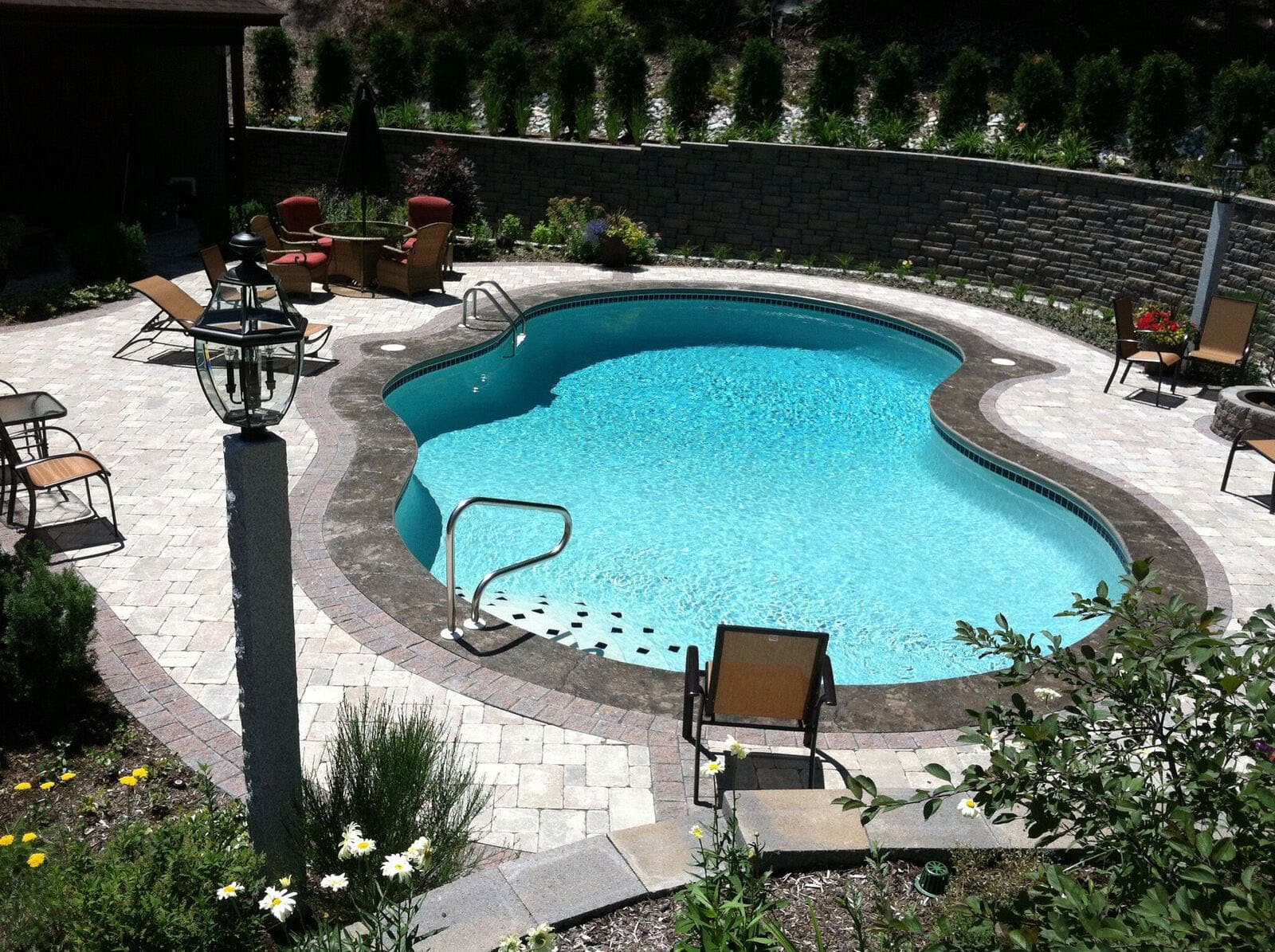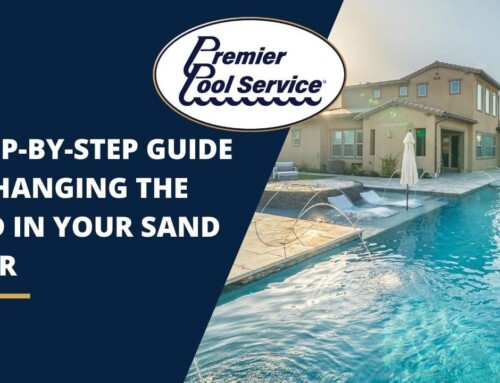Common Pool Problems & How To Fix Them
You spent all spring getting your pool ready for the season, and now that summer is finally here, you’re ready to take the plunge. But before you dive in headfirst, there are a few things you should know. Even if you take meticulous care of your pool, problems can still arise.
To help you troubleshoot (and avoid potential headaches), we’ve compiled a list of 15 common pool problems—and their solutions.

1. Algae growth
If you notice algae growing on the walls or floor of your pool, don’t panic—it’s a common problem that can be easily remedied.
First, try brushing the affected areas with a stiff brush. If that doesn’t work, you can add an algaecide to your pool according to the manufacturer’s instructions. Be sure to run your filter continuously until the algae is gone.
2. Cloudy water
Cloudy water can spoil the look (and feel) of your pool, and it can also be dangerous if swimmers can’t see where they’re going. The good news is, there are several things you can do to clear up cloudy water.
First, check your filtration system to make sure it’s working properly. You may also need to add more chlorine or other chemicals to balance the pH levels in your pool. For stubborn clouds, you may need to vacuum the bottom of your pool or give it a good shock treatment with chlorine tablets or granules. This is one of the more common pool problems around.
3. Chlorine levels are too high/too low
Chlorine is essential for keeping your pool water clean and safe to swim in, but too much or too little chlorine can create problems. If chlorine levels are too low, bacteria and algae can grow unchecked—which can make swimmers sick and ruin the look of your pool.
On the other hand, high chlorine levels can irritate swimmers’ skin and eyes and cause respiratory problems. To maintain proper chlorine levels, test your pool water weekly and adjust accordingly according to the manufacturer’s instructions for adding chemicals to pools.
4. Foamy water
Foamy water is usually caused by an imbalance in pH levels or excessive amounts of soap or body oils in the water. The best way to fix foamy water is to test the pH levels and add chemicals as needed to achieve balanced pH levels (between 7.2 and 7 .6).
You may also need to vacuum the bottom of your pool or give it a good shock treatment with chlorine tablets or granules if foam persists after balancing pH levels .Skim any foam that forms on top of the water so it doesn’t get into swimmers’ eyes when they jump in .
5. Green pool water
If your pool water is looking a little green, it’s probably due to algae. Algae are plant-like organisms that live in water and can range in color from green to yellow, brown or red. While algae are a common problem in pools, there are a few things you can do to get rid of them for good.
First, it’s important to understand what causes algae growth in pools. Algae need sunlight and warm temperatures to thrive, so they’re more likely to grow in the summer months. They also feed on bacteria and other nutrients found in pool water, which is why maintaining proper pH levels and chlorine levels is so important. If either of these levels is too low, it can create the perfect conditions for algae to grow.
There are a few different ways to get rid of algae in your pool. You can use algaecides, which are chemical compounds that kill algae on contact. You can also use physical methods like brushing and vacuuming to remove algae from surfaces like the walls and floor of your pool. Finally, you can increase the chlorine or pH levels in your pool to make it inhospitable for algae growth.
6. Leaks
Leaks can wasting hundreds of gallons of water per month and cause your pool to lose chemicals. If you suspect a leak, the best way to confirm (and find out where it’s coming from) is to conduct a bucket test. To do this, fill a 5-gallon bucket with water and place it on the second step of your pool so the top of the bucket is even with the water level in your pool.
Mark the water level in the bucket, turn off your pool pump, and wait 24 hours. After 24 hours, check the water level again—if it’s lower in the bucket than it was when you started, you have a leak! Once you know you have a leak, you can begin repairs. Small leaks can often be fixed with sealant or putty, but larger leaks may require more extensive repairs (or even replacement) by a professional. See our leak detection services here.
7. Pool liner wrinkles
Pool liner wrinkles are usually caused by low water levels, which cause the liner to sag and form wrinkles .To fix this problem , increase the water level in your pool until it meets the middle of the skimmer opening. You may also need to add more weight around the perimeter of your pool (such as sandbags) to keep the liner from shifting. If wrinkles persist, you may need to replace your liner .
8. Scale buildup
Scale buildup is most commonly caused by high pH levels—but it can also be caused by high alkalinity or calcium hardness levels. Scale appears as white or grayish deposits on surfaces in and around your pool, and if left unchecked, it can damage surfaces and reduce swimming enjoyment.
To prevent scale buildup, test pH levels regularly and add acid or other chemicals as needed to maintain proper pH levels (between 7.2 and 7.6 ). You may also need to vacuum away any scale that has already formed
9. Spots on pool walls/floor
Spots on surfaces in and around your pool are usually caused by scale buildup (see problem #8 for solutions). However, spots can also be caused by rust stains, which form when iron or other metals come into contact with chlorine To remove rust stains , scrub them with a stiff brush dipped in a mixture of equal parts chlorine bleach and water If spots persist, you may need to call a professional for help.
10. Calcium Build-Up
When it comes to pool care, calcium build-up is one of the most common problems that pool owners face. Calcium build-up not only makes your pool look unsightly, but it can also clog your filters and prevent your pool from operating efficiently. The good news is that there are a number of things that you can do to prevent calcium build-up in your pool.
One of the best ways to prevent calcium build-up is to make sure that you have the proper water balance in your pool. Water that is too acidic or too alkaline can cause calcium to precipitate out of solution and onto surfaces such as the walls and floor of your pool. To maintain the proper water balance, you should test your pool water regularly and adjust the pH as needed.
In addition to maintaining proper water balance, you can also help prevent calcium build-up by using a high-quality swimming pool cover. A cover will help keep dirt and debris out of your pool, which can lead to calcium deposits. Additionally, a cover will also keep evaporation to a minimum, which can help keep your water chemistry in balance.
11. Clogged Pool Filter
A clogged pool filter is one of the most common problems that pool owners face. There are a few things that can cause your pool filter to become clogged, and there are a few ways to fix it.
One of the most common causes of a clogged pool filter is dirt and debris. This can come from a variety of sources, including leaves falling into the pool, rainwater, and even dirt and debris that is tracked into the pool area. When this happens, it’s important to clean out the pool filter as soon as possible. Otherwise, the dirt and debris will start to build up and cause the filter to become less effective.
There are a few different ways to clean a clogged pool filter. One way is to backwash the filter. This involves turning off the pump and then reversing the flow of water through the filter. This will flush out any dirt and debris that has built up in the filter. Another way to clean a clogged pool filter is to disassemble it and clean it with a hose. This method is more time-consuming, but it will ensure that all of the dirt and debris is removed from the filter.
12. Poor Circulation
If you have a pool, you know how important it is to keep the water circulated. Not only does it help to keep the water clean, but it also helps to keep your pool equipment working properly. Unfortunately, sometimes pool circulation can be poor, which can lead to all sorts of problems.
There are a few different reasons why your pool circulation might be poor. One possibility is that your pump isn’t working properly. This could be because the power is out, the pump is turned off, or there is something wrong with the pump itself. If you think this might be the problem, check to see if the power is on and if the pump is turned on. You may also want to consult a professional to have them take a look at your pump.
Another reason for poor circulation might be that your filter needs to be cleaned or replaced. If your filter isn’t working properly, it can restrict the flow of water and make it difficult for the water to circulate. You should check your filter regularly to see if it needs to be cleaned or replaced. Changing your pool filter is a great way to avoid many common pool problems.
Finally, poor circulation can also be caused by obstructions in your pipes. If there is something blocking the flow of water, it will make it difficult for the water to circulate properly. You may need to hire a professional to clear out any obstructions in your pipes.
If you’re having trouble with poor circulation in your pool, try one of these solutions. With a little troubleshooting, you should be able to get your pool Circulated properly again in no time!
13. Pink Slime
As the summer heat kicks in, many of us take to cooling off in our backyard pools. But what most of us don’t know is that there could be something lurking in those waters – pink slime.
This slimy substance is actually a type of algae, and while it may not sound Harmful, it can actually be quite dangerous. Pink slime is often mistaken for pink mold, but it is actually a much different type of organism. While mold can cause skin irritation and other health problems, pink slime is capable of causing much more serious problems.
For one, pink slime can release toxins into the water that can be harmful if ingested. In fact, some cases of pink slime have been linked to gastrointestinal illnesses. In addition, this algae can also lead to respiratory problems if you happen to inhale any of the contaminated water.
So how do you protect yourself from this potentially dangerous problem? The best way is to make sure that your pool is properly chlorinated on a regular basis. This will kill off any pink slime that may be present and prevent it from coming back.
If you do find yourself with a case of pink slime in your pool, don’t panic – there are things you can do to get rid of it. You can manually remove the algae with a pool brush or net, and then vacuum the affected area to get rid of any remaining particles. Once you’ve done this, increase the chlorine levels in your pool to make sure that the problem doesn’t come back.
14. White Mucous
If you’ve ever taken a dip in a pool and come out with white mucous clinging to your body, you may have wondered what it is. While it’s possible that it could be something like residue from swim diapers or suntan lotion, it’s more likely that it’s actually pool algae.
Algae are tiny plant-like organisms that can live in both fresh and salt water. They range in color from green to brown to red, and while they’re generally harmless, they can sometimes cause problems in pools. When algae bloom, they can release toxins into the water and make swimmers sick. They can also clog filters and make pools difficult to clean.
While most algae blooms are caused by environmental factors like warm weather or too much rain, they can also be caused by poor pool maintenance. If the pH level of the water is off or if the chlorine levels are too low, it can create an environment that’s ripe for an algae bloom.
If you see white mucous in your pool, the best thing to do is to test the pH and chlorine levels and adjust as necessary. You may also want to shock the pool with chlorine to kill any existing algae. And of course, be sure to brush the walls and vacuum the floor regularly to prevent future blooms.
15. Bugs In Your Pool
There are many different types of bugs that can infest your pool, and each one thrives in different conditions. Whether it’s the hot weather or rainy season, there’s always a chance that pesky insects will take up residence in your pool. It’s important to know what kind of bugs you’re dealing with so you can take the necessary steps to get rid of them.
One of the most common types of pool pests is the mosquito. These annoying little creatures love nothing more than stagnant water, which makes your pool a prime breeding ground for them. Not only are mosquitoes a nuisance, but they can also transmit dangerous diseases like Dengue Fever and West Nile virus. The best way to keep them away is to make sure there is no standing water around your pool area, and to use a mosquito net or screen when you’re swimming.
Another common type of bug you might find in your pool is the leafhopper. These small insects are attracted to pools because they provide a consistent source of water. Leafhoppers feed on plant sap, and if there are any plants near your pool, they will likely be their first target. To get rid of leafhoppers, you need to remove any potential food sources from around your pool area, as well as introduce predators like ladybugs or lacewings into the environment.
If you live in an area with a lot of trees, then you might also find tree frogs taking up residence in your pool. These amphibians are excellent swimmers and often mistake pools for ponds or lakes. While tree frogs are generally harmless, they can carry diseases like Salmonella and Encephalitis, so it’s best to remove them from your pool as soon as possible. The best way to do this is to install a frog-proof fence around your pool area.
Finally, one of the most frustrating pests you can find in your pool is the algal bloom. While not technically an insect, these microscopic plants can quickly turn your once crystal-clear waters into a murky green mess. Algal blooms are often caused by too much sunlight and nutrients in the water, so the best way to prevent them is to keep your pool clean and properly maintained. If an algal bloom does occur, you can often get rid of it by simply adding some chlorine to your pool water.
In need of a professional pool service? We are here to help. Fill out the form below for a free quote or click HERE to find a location near you.
Get a FREE quote
Looking to build a brand new swimming pool or add a spa or water feature to your existing pool? Check out our fantastic pool designs at premierpoolsandspas.com.



